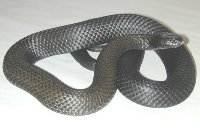


Venomous Country
Participants
Venomous Country
Endnotes
Index
Search
Help
Contact us

The role of Surf Life Saving in this whole story of marine envenomation was and remains crucial and very distinguished indeed. And they don't often get much credit for it - for example, their publication in 1996 of the international text Venomous & Poisonous Marine Animals.[37] This work was strongly encouraged by Struan, who kindly wrote the Foreword.
Inevitably along the way in all these researches, a number of controversies sprang up. Now, I don't want to monopolise this whole session, but I know if Struan was here, he'd want these controversies addressed. One of them concerned the challenge to the efficacy of antivenom by Dr Bob Endean.[38] I'm sure people here will remember this discussion that occurred in the pages of Toxicon, in the media, on the phone and so forth. Bob Endean, for whom we all have the very greatest respect and who was a great contributor to this whole field in his researches at the University of Queensland, cast doubt on the actual efficacy of the existing CSL box-jellyfish antivenom mixture to offer protection against what appeared to be the dangerous myocardial effects of the Chironex venom.
To cut again another long story short, my wife and I were sitting on the beach, on the Esplanade, one summer's day in Townsville and I observed coincidentally (that's my story, and I'm sticking to it!) a very attractive young lady in a bikini going into the water. It was at the height of the box-jellyfish season's risk time. She walked in and, as I watched her, she got to about thigh depth and gave the classical reaction [of box- jellyfish envenomation] that those of us associated with Surf Life Saving and this problem recognise immediately. She leapt backwards and I think she squealed, though she was far enough away for me not to hear that. As she ran back out, clearly in distress, I could see the welts and the adherent tentacles on her legs. She had very fair skin and she was, in fact, from Canberra. (Incidentally, she was not a politician!)
Fortunately this had happened right in front of me. I put her in our car and drove her straight to the Casualty at the Townsville General Hospital, put up an intravenous line and injected antivenom very slowly diluted with intravenous saline running in while she writhed in agony. She had these tremendous welts on her leg, classical of the box- jellyfish skin. And do you know, in front of my eyes, the following clinical events occurred. She stopped writhing, sat up and said, 'That's better doc'. And as I looked at her legs, the acute inflammatory response faded, again in front of my eyes, real time.
I rang Struan up about this and he was delighted. Now she didn't develop any detectable direct deleterious cardiovascular effects but subsequent deaths and stings did demonstrate that ability [of the venom]. And we now understand that the myocardium stops at systole in the unresuscitated patients from massive stings from this animal. However this case did, without question, at least anecdotally, demonstrate the actual efficacy of the antivenom for pain relief and for reduction of skin damage, and that was published.[39] I'll stop there.
Ken Winkel: Thanks very much John. Perhaps Peter Mirtschin from Venom Supplies in South Australia would like to cast his mind back to his first days in herpetology and encounters with Struan.
Peter Mirtschin[40]: It was probably in the mid-70s when I first got to know Struan. He was a pretty famous person and received a lot of publicity, and I was just starting off on the commercial side of producing venoms. I got to know him and he wanted some of the rare snake venoms.
I got him some of the Kreffts tiger snake venom[41] and also some of the Reevesby Island tiger snake venom[42], which were pretty potent. I met him for the first time at the Melbourne Zoo Conference in 1980.[43] He was a wonderful guy and I remember him ringing me up one day after I had a bit of publicity, as herpetologists do from time to time. He wasn't very happy about what I'd said. I don't remember what it was. But I remember he really kicked my bum well and truly. But we both moved on from that and we had a pretty good relationship over the years.

Photography courtesy of Peter Mirtschin
He was a very helpful person. I was a mechanical engineer, dabbling with snakes and medical research. But this didn't faze him. He thought this was quite OK. I was always having trouble with the wildlife authorities getting permission to collect various snake species, and I always could rely on Struan to support the application. He would always back up an application and I remember I had particular difficulty with a toxinologist, whose name I won't mention, in trying to get approval to keep exotic snakes - we now keep a large collection of them. In those days we were just trying to get the bona fides to do it and Struan really did help facilitate that. This was my initial exposure to Struan. I think he was a wonderful person and I think we'll speak more of other things I was involved in as we go along.
 |
Witness to the History of Australian Medicine |  |
© The University of Melbourne 2005-16
Published by eScholarship Research Centre, using the Web Academic Resource Publisher
http://witness.esrc.unimelb.edu.au/078.html